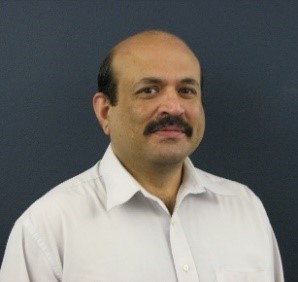Functionality is continually being added to aircraft interiors, creating the need for efficient wireless communications to keep wire mass down. Students on this Collins Aerospace Wifi Communication Bridge team will design and develop a bridge that seamlessly achieves data transfers between a low power/low bandwidth communication protocol and a high power/high bandwidth communication profile.
Abstract:
With Collins’ acquisition of B/E Aerospace in April 2017, they are now a world leader in designing, developing and manufacturing cabin interior products and services that deliver innovation, reliability and efficiency. Our broad range of offerings include aircraft cabin seating, lighting and engineering solutions, oxygen systems, food and beverage preparation and storage equipment, galley systems, water and waste systems, and advanced lavatory systems. We also collaborate closely with our customers to provide customized cabin interior reconfiguration, program management and certification services.
The interior of an aircraft is changing with an objective of improving the passenger experience. As new functionality is added, we have an opportunity to instrument parts of these new components that would lead to state-of-art capabilities such as prognostics and health management (PHM). Instrumenting new components with sensors would traditionally add weight to the aircraft by way of additional wiring and connector. An alternative method would be to use wireless communications thereby eliminating the need for additional wires and harnesses. The low data needs and associated duty cycles required for instrumentation are optimal for low power/low bandwidth protocols such as IEEE 802.15.4. Once data has been acquired and aggregated, it still needs to be communicated to other aircraft systems such as the electronic crew bag and ground support. These systems typically communicate using high power, high bandwidth protocols such as IEEE 802.11. Thus, a bridge or gateway is required to effectively communicate between 802.11 and 802.15.4 networks.
While commercial protocols such as 6LowPAN are available that may have some of the functionality described above, they are sub-optimal for use in an aerospace application due to RF propagation characteristics and security considerations. Students on this Collins Aerospace Wifi Communication Bridge team will design and develop a bridge that seamlessly achieves data transfers between a low power/low bandwidth communication protocol and a high power/high bandwidth communication profile.
Impact:
The new bridge to be developed enables Collins to continue to deploy aerospace driven enhancements to IEEE 802.15.4 that consider RF propagation and security while also integrating seamlessly into traditional high bandwidth communications protocols such as IEE 802.11. This provides an effective method to instrument new functions and features in order to deliver new capabilities such as PHM that will not only improve the passenger experience but also enable airlines to deliver higher quality services.
Full Project Details
Embedded Systems Development (2-3 students)
Specific Skills: Embedded systems development. Experience with Wi-Fi technology.
Completion of EECS 373: Introduction to Embedded System Design
Likely Majors: CS, CE, EE
Communication Protocols (3-4 students)
Specific Skills: Basic understanding of network protocols, packet structures, etc.
Completion of EECS 455: Wireless Communication Systems
Likely Majors: EE
Electromagnetics (1-2 students)
Specific Skills: Basic understanding of electromagnetics and wireless communications.
Completion of EECS 330: Electromagnetics II
Completion of EECS/APPPHYS 530: Electromagnetic Theory a plus
Likely Majors: EE, CE
Sponsor Mentor

Sanjay Bajekal
Associate Director, Intelligent and Integrated Products
Mr. Bajekal is the Associate Director, Intelligent and Integrated Products at Collins Aerospace, Interiors. His group leads development of new functionality to aircraft interiors that is typically enabled through electronics and software. He is the holder of nineteen granted patents, author of numerous peer reviewed publications and an invited speaker on wireless and communications topics as applied to aerospace applications.
Faculty Mentor

Wayne Stark
Electrical Engineering and Computer Science
Wayne Stark received his Ph.D. from the University of Illinois in 1982. Since then he has been at the University of Michigan, Ann Arbor, where he is a Professor of Electrical Engineering and Computer Science. He was an Associate Editor of the IEEE Transactions on Communications from 1985-1989. He received a national Science Foundation Presidential Young Investigator Award in 1985, was a member of the Board of Governors of the IEEE Information Theory Society from 1986-1988., and became an IEEE Fellow in 1998. His research interests include a range of topics related to wireless communication systems including spread-spectrum modulation, error control coding, adaptive coded-modulation, facing, multiple-access, jamming, and handoff algorithms.
Course Substitutions: …
Citizenship Requirements: This project is open to all students on campus.
IP/NDA: Students will sign standard University of Michigan IP/NDA documents.
In Person/Remote Participation Options:
Work will take place on campus in Ann Arbor, MI.
On-Campus Participation Requirements
Students who are approved to attend classes remotely for Winter (and Fall if necessary) 2022 may
participate on this project.
Internship/Summer Project Activities:
US Citizens/Permanent Residents who join this team are guaranteed an interview for a Summer 2022 Internship. Interviews will take place in Spring 2022.
- Non-US Citizens/PR cannot be considered for a summer internship due to Collins Aerospace’s hiring restrictions as a government/DoD supplier
